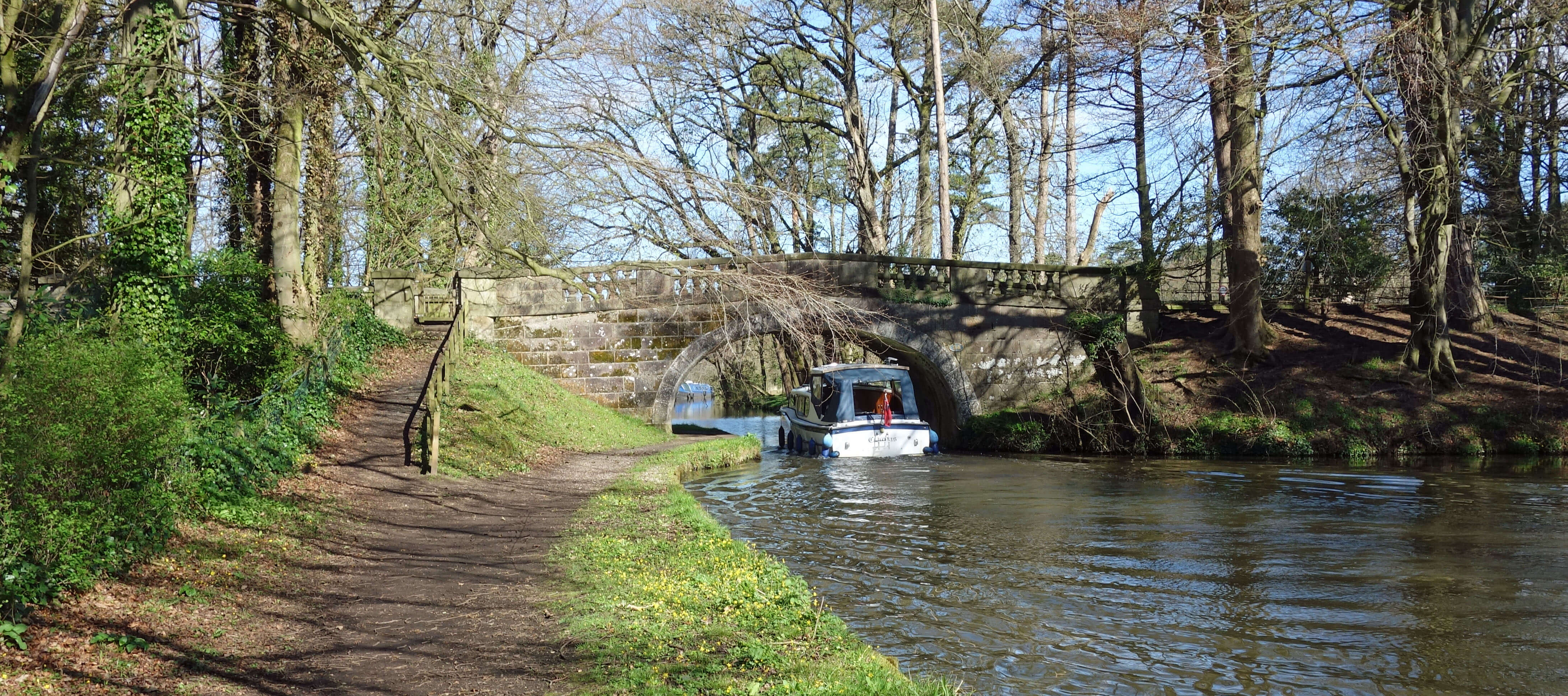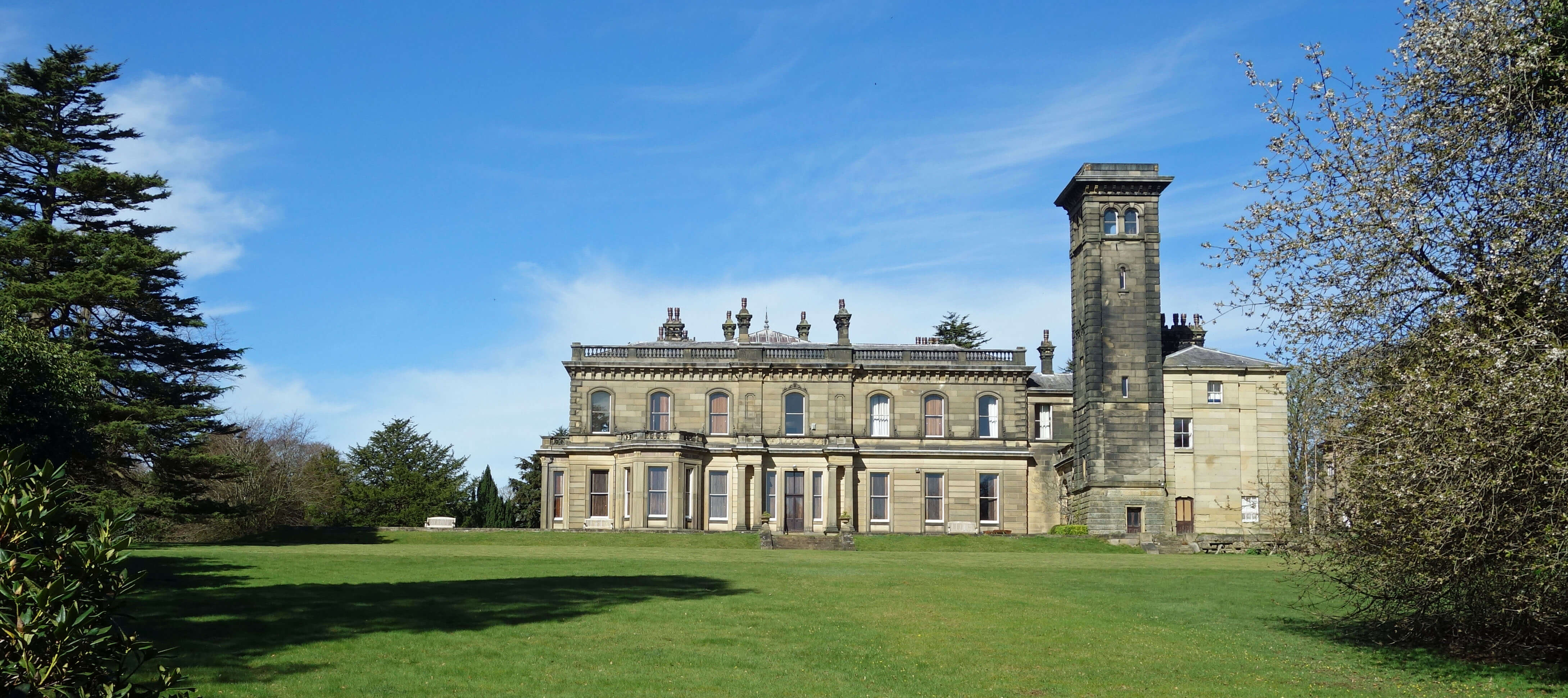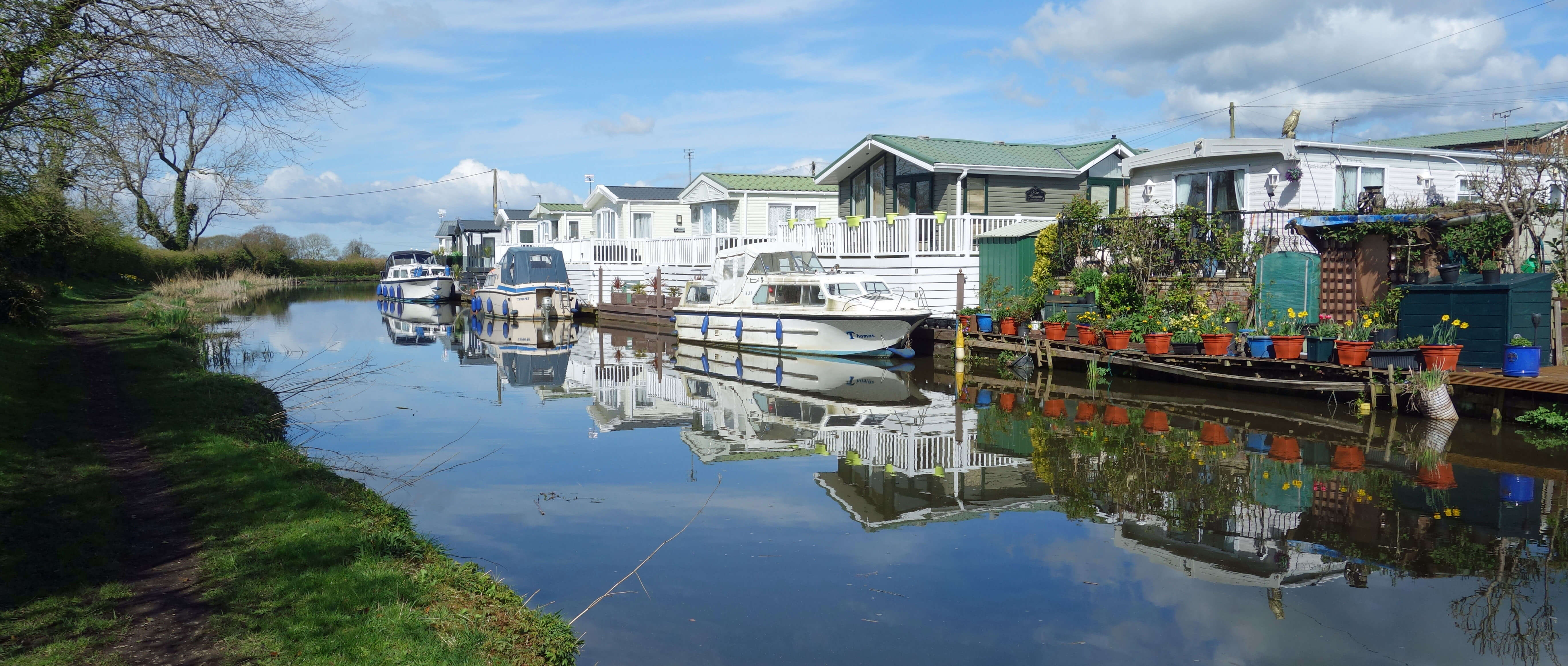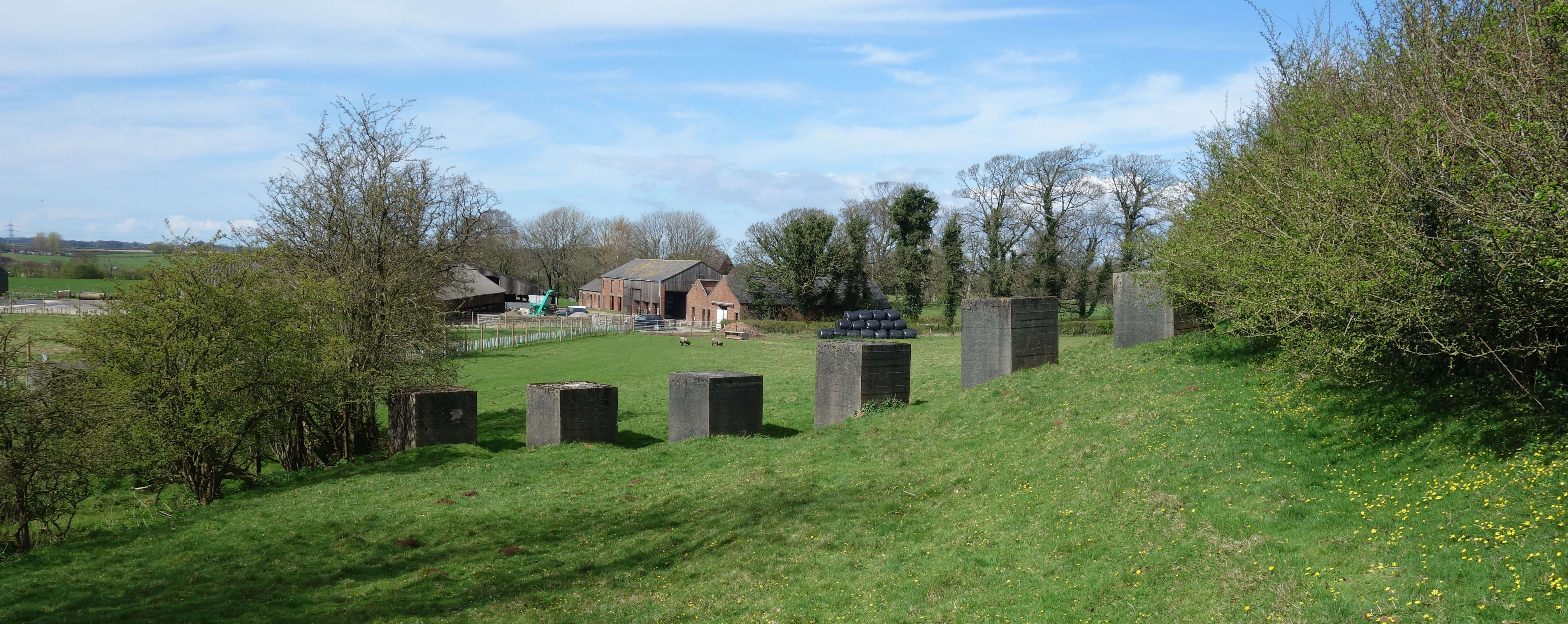
Home
Preamble
Index
Areas
Map
References
Me
Drakkar
Saunterings: Walking in North-West England
Saunterings is a set of reflections based upon walks around the counties of Cumbria, Lancashire and
North Yorkshire in North-West England
(as defined in the Preamble).
Here is a list of all Saunterings so far.
If you'd like to give a comment, correction or update (all are very welcome) or to
be notified by email when a new item is posted - please send an email to johnselfdrakkar@gmail.com.
153. Thoughts from the Towpath (Galgate to Garstang)
A long time ago, it seems now, I walked along the Lancaster Canal towpath from Bilsborrow to Preston
(Sauntering 45). It was a long and tedious walk
that I tried to enliven by reflecting on the activities of walker-thinkers such as Nietzsche, Thoreau
and Rousseau, as discussed in A Philosophy of Walking (Gros, 2014). This time, after being grounded
by mild covid, I thought that a gentle stroll along the canal from Galgate to Garstang was
in order, again enlivened by some thoughts on Gros’s opus, in particular, his views on the states
of well-being afforded by walking.

Galgate marina
I set off from Galgate marina, which, while not busy, was stirring itself into a spring awakening.
Beyond the Glasson branch of the canal I passed under a bridge with balustrades unlike run-of-the-mill
canal bridges. I assume that this bridge was built (or re-built) to provide an impressive entrance to Ellel Grange,
a stately-looking structure that was built on the site of a centuries-old grange in 1857-59.
It appears to be modelled on Queen Victoria’s Osborne House, with similar square towers with flat caps. It has
become the home of
Ellel Ministries,
a now-international organisation that provides spiritual help for those who need it.


Left: Canal bridge near Ellel Grange; Right:
Ellel Grange.
In 2021 there was a
proposal
to build a ‘holiday village’ including a 90-bedroom hotel and 450 lodges in fields surrounding Ellel Grange.
The report says that the land was “once part of the famous Ellel Grange estate” but I don’t know who
owns it now. I also don’t know if this proposal relates to, or is independent of, the proposal to
re-design junction 33 of the M6 to relieve the traffic bottleneck through Galgate. If any of this
comes to pass then this walk will become rather different.
Back on the towpath, heading south into a warming sun, with the blackthorn blossoming and the hawthorn
greening, it was pleasant enough. Most of us are content that walking enhances our well-being, without
worrying about further analysis. Gros, however, needs to draw distinctions, as the ancient schools of
philosophy tried to do. The first state of well-being that Gros discusses is pleasure, about which
he says: Pleasure “is always some sensation, and always triggered by an encounter, by something that
confirms, from outside, the possibilities inscribed in our bodies. Pleasure is the encounter with
the good object: the one that causes a possibility of feeling to blossom … In walking, you find these
moments of pure pleasure, around encounters. The scent of blackberries or myrtle, the gentle warmth
of an early summer sun, the freshness of a stream.”
Yes, I was, I suppose, experiencing that sense of pleasure. It was not exactly bliss, however, for here the canal runs quite close to the noisy A6. In fact, within a kilometre to the east there are three more lines of transport, all heading north-south in parallel: the old coach road (which ran past the Hole of Ellel), the west coast railway line, and the M6 (the last two adding to the noise). However, once I had passed Potters Brook Bridge the canal swung west to become quieter.

Cartmels Bridge and Lancaster Canal, a scene typical of miles of the canal
Gros’s second state of well-being is joy, which he considers more demanding, more complete
and more rich than pleasure. He says “Joy, unlike pleasure, increases with repetition, and is enriched. When you are walking, joy is a basso continuo … What dominates in walking … is the simple joy of feeling your body in the most primitively natural activity … When you walk, the basso continuo of joy comes from feeling the extent to which the body is made for this movement … Even apart from the action of walking, but compatible with it, there is also joy experienced as fullness, the joy of living.”
From this description, it seems that I needed to walk more miles to experience joy.
So I strode out, without much to detain me. I disturbed two herons and later came upon a group of eight
swans, some of whom were nesting in reeds on the opposite bank. The canal became more open, with
occasional views across to the Bowland hills but only rarely to the snow-capped Lakeland hills. Occasionally,
the modern world intruded.
I noticed that the parapets of Cockerham Road Bridge had been well and truly demolished, meaning that the
bridge was closed for traffic although I could still walk under it.
I saw only a couple of canal-boats in action but many more were dormant on the canal-side, with
only a few having people within, as far as I could tell without peering in the windows. Around
Winmarleigh Bridge there was a cluster of canal-boating inactivity with a park of twee holiday homes
that the owners take pride in keeping neat and tidy.
 Left: Smithy Leisure Park at Winmarleigh Bridge
Left: Smithy Leisure Park at Winmarleigh Bridge
Gros next considers happiness, which he regards as a more fleeting experience than pleasure
or joy, one occasioned by a particular event or observation that is unlikely to re-occur if the walk
is repeated. He writes that “Happiness involves finding oneself the recipient of a spectacle, a moment,
an atmosphere, and taking, accepting and grasping the blessing of the moment. For that there can be no recipe,
no preparation; one has to be there when the moment comes … Happiness is fragile precisely because it is not repeatable; opportunities for it are rare and random.”
So if I saw a kingfisher then that might provoke happiness. Sadly, I didn’t see a kingfisher
or much else out of the ordinary. Towpath-walking is not ideal for generating happiness, since there
is little change for mile after mile. I am not surprised because Jimmy Ruffin had warned me
that “happiness is just an illusion filled with sadness and confusion” (What becomes of the
broken-hearted, 1966). On the other hand Ken Dodd was adamant that happiness was the greatest
gift that he possessed (Happiness, 1964).
It is all very well Gros trying to define different states of well-being but if he uses everyday
words to label them then we are bound to bring in all sorts of associations and nuances that he does not
intend. He really should indicate that he is using technical terms (in so far as philosophy has technical
terms) by using neutral labels such as WB1, WB2, and so on – which would have the added benefit of making
the sentences even more inscrutable than they already are. So I’ve put the terms in bold to indicate that
the words don’t mean what you think they mean.
Gros’s last state of well-being is serenity: “Serenity comes from simply following
the path. And then, while walking, serenity comes because all the hassles and dramas, all the things
that gouge empty furrows in our lives and our bodies, become as if absolutely suspended, because out of
range, too remote and incalculable. The wearisome grand passions and distasteful excitements of active lives, stressed to breaking point, are supplanted in the end by the implacable lassitude of walking: just walking.”
Towpath-walking is in its element here. Just follow the path, the same path, for mile after mile.
That’s all you have to do. However, serenity is not really what I seek on my walks, no more than
I want ‘smooth classics’ on Classic FM. I prefer classical music to be unruly, edgy, emotional, turbulent
and with highs and lows. There are no highs and lows with towpath-walking.
About the only unusual thing encountered on this walk was a line of six concrete hexahedra in a field
near Nateby Hall (which is now an ordinary farmhouse, any architectural distinction of the original hall
having disappeared in a fire of about 1870). What are or were the hexahedra for? I have read
that they were to defend against German tanks. Was the country once covered with
such hexahedra? Have the rest all been removed? Or were the German
tanks particularly aiming for Nateby Hall?
 Right: The concrete hexahedra near Nateby Hall
Right: The concrete hexahedra near Nateby Hall
I walked on, coming to a profusion of canal-boats parked in the marina on the outskirts of Garstang.
Feeling an implacable lassitude myself now, I amused myself by appreciating the whimsical winsomeness of
canal-boat naming. Being amused is a state of well-being not considered by Gros, as it is not often
provoked by walking. Being amused is, I find, more often generated while writing about walking – and, I hope,
occasionally stimulated by reading writing about walking.
There are no restrictions on canal-boat names, unlike racehorse names, which have to be approved by
the British Horseracing Authority (I am offended to read that the Authority are immediately suspicious of any name
with Norfolk in it). So canal-boat owners have free rein. Some play safe with a personal name, usually
feminine, such as “Roxanne” and “Lady Violet”. Others try to capture the nature of canal-boating. I noticed
a “Legato” and an “Adagio” (but no “Prestissimo”). Some are pretentious: “Sull’Acqua” and “Lé Onde” (what’s the accent for?). Some are blunt: “Nothing Else Matters” and “Pist n Broke”. The best – because it was the worst – was “Sir T. Fiable”.
Overall, then, I wouldn’t say that I experienced pleasure, joy, happiness or serenity on this walk. But then I was not so much focussed on states of well-being. I was just relieved to be in a state of being well.
Date: April 8th 2022
Start: SD484566, Galgate (Map: 296)
Route: (linear) S on A6 – Galgate marina – S on canal towpath – Garstang
Distance: 8 miles; Ascent: 5 metres
Home
Preamble
Index
Areas
Map
References
Me
Drakkar
© John Self, Drakkar Press, 2018-

Top photo: The western Howgills from Dillicar;
Bottom photo: Blencathra from Great Mell Fell






 Left: Smithy Leisure Park at Winmarleigh Bridge
Left: Smithy Leisure Park at Winmarleigh Bridge
 Right: The concrete hexahedra near Nateby Hall
Right: The concrete hexahedra near Nateby Hall
